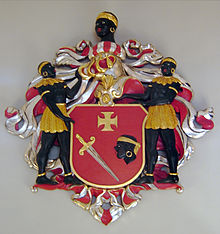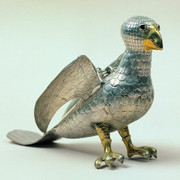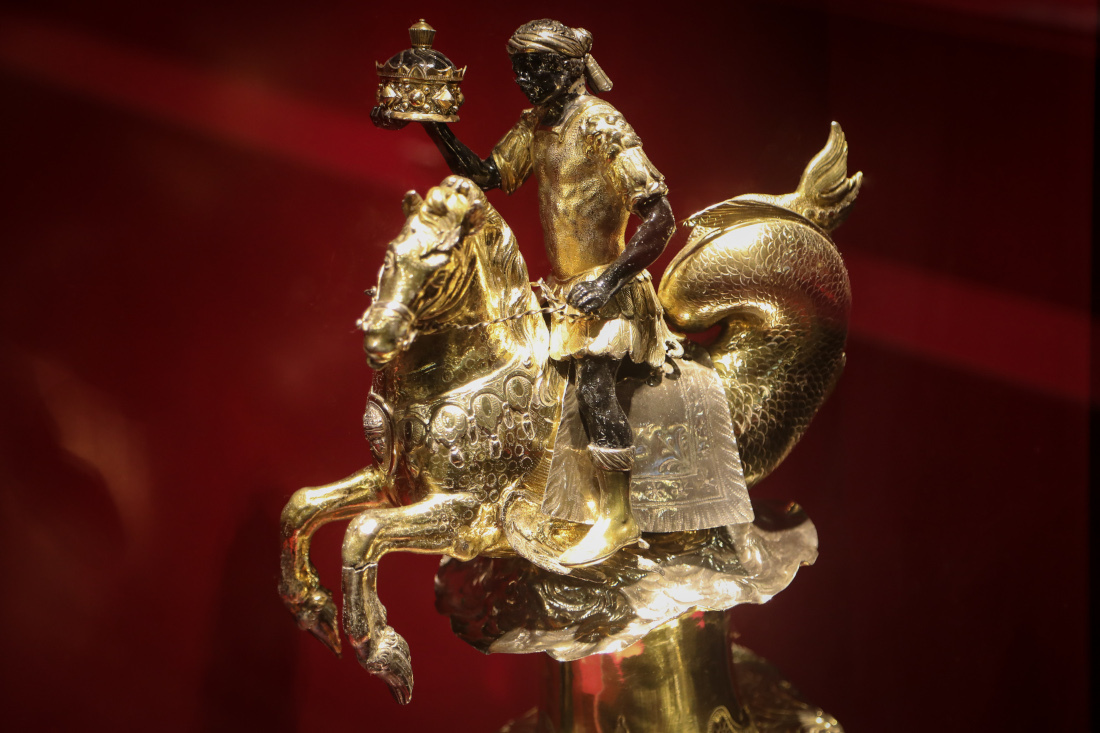Dear Samton76df,
your spoon is obviously from Norway.
I cannot find a trace of any norwegian makers hallmark
CT/GT in the book
"Norsk Sølv" by Sigrid Wegge Tandberg.
But I can tell you something else.
The "
double-spoon" has an engraving:
"
St. Skyde Selskap" –
4 Mch (march)
1821
1769 was the founding of the "
Bergenske Skyde-Selskab", which lasted til 1824.
The shooting took place at Nøsteboden, part of the monastery "Nonneseter", which was found in the 12 Century; surrounding of "Danckert Krohns Stiftelsen" (Kong Oscarsgate 54 i Bergen) and "Skivebakken".
(
skive = disk +
bakken = hill)
The german trading company "
The Hanse" brought the custom to Bergen and Skiven to this monastery.
1497 were three german craftsmen allowed to shoot birds on this ground, a game they knew from Europe.
They called this place "Jerusalem".
This explains the kross.
King Christia IV. took part at this competion, which was called «
skivespillet».
Today this "skive" is exhibited in the museum Tyskebryggen i Bergen.
"Bergenske Skyde-Selskab" was indeed a very exclusive community with high membership fees.
Ladies were a long time allowed to visit the meetings, but they were not allowed to become a member.
In 1800 the meetings were only for "gentlemen", because they thought, it is no fun to have the wifes around.
The members called the attraction „
Shooting the Parrot“, although they were later using discs.
The last shooting took place in 1824.
The winner became twelve spoons of Jens Kahrs, a silver manufacturer from Bergen.
Here is a foto of a coffe pot from Friderick Mincke, which was 1794 a premium from the Skyde-Selskab i Arendal/Norway.
a)
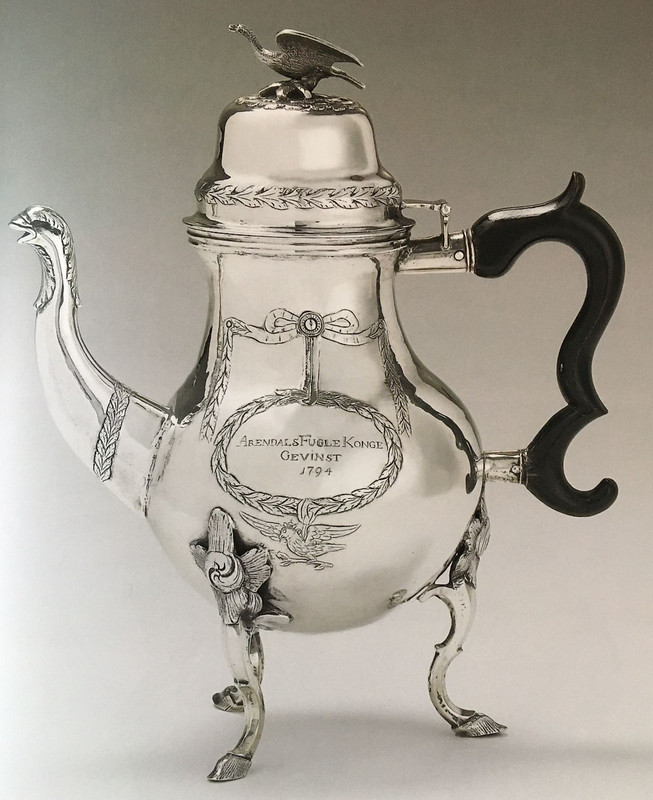
Your spoon may be produced at another place than Bergen.
The members, for example shipowners or trading people, had connections at home and abroad.
But why did they give such a "double-spoon" as a present later on?
2004 was an exhibition in Zürich.
Such a type of spoon from the 16 th century was shown, made of maple-wood.
b)
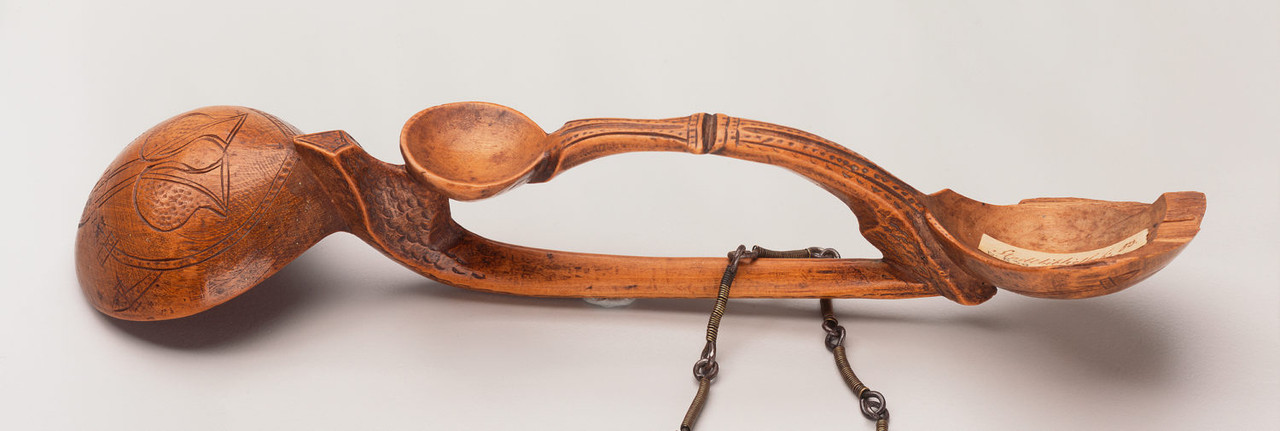
Earlier in some courtrooms this type of spoon was offered to a husband and his wife, if they had never ending quarrels.
They were locked into a room and had to eat a soup together with only one spoon.
It is also known as a "reversible" spoon where the two "laffe" are in opposite directions of each other.
This was only possible, if both agreed, who was allowed to eat.
In Switzerland such a spoon is hanging on the court-wall as a warning.
Kind regards
Silverstone
Lit.:
Wander, Karl Friedrich Wilhelm, Deutsches Sprichwörter-Lexikon, Band 5, Leipzig 1880
Det gode liv, Hansakontoret
Det Bergenske Skyde-Selskab, av Knut L. Espelid
Papegøyeskyting, Erik Ivarson Blindheim
Foto a): Norsk sølv, Gullsmeder gjennom 600 år, Jorunn Fossberg, Sigrid Wegge Tandberg, S. 383
Foto b): Schweizerisches Nationalmuseum, Claudia Walder









